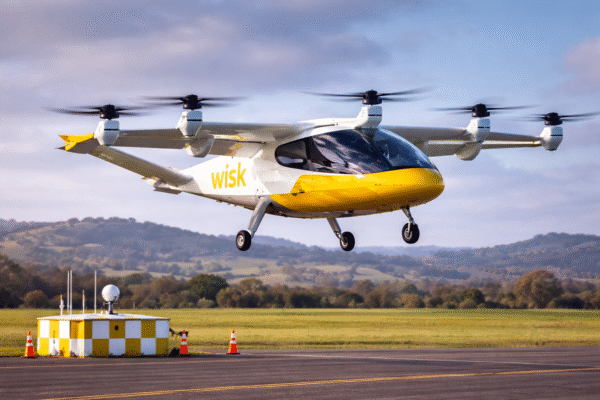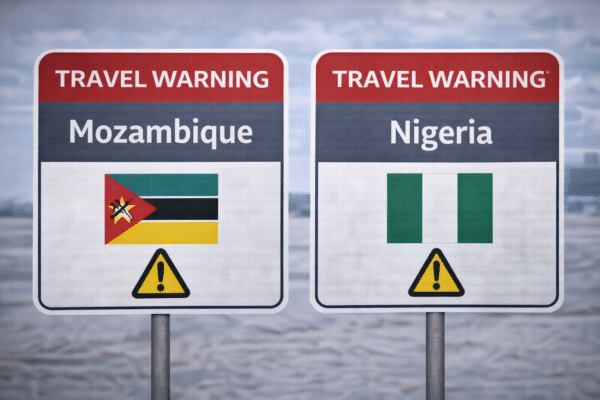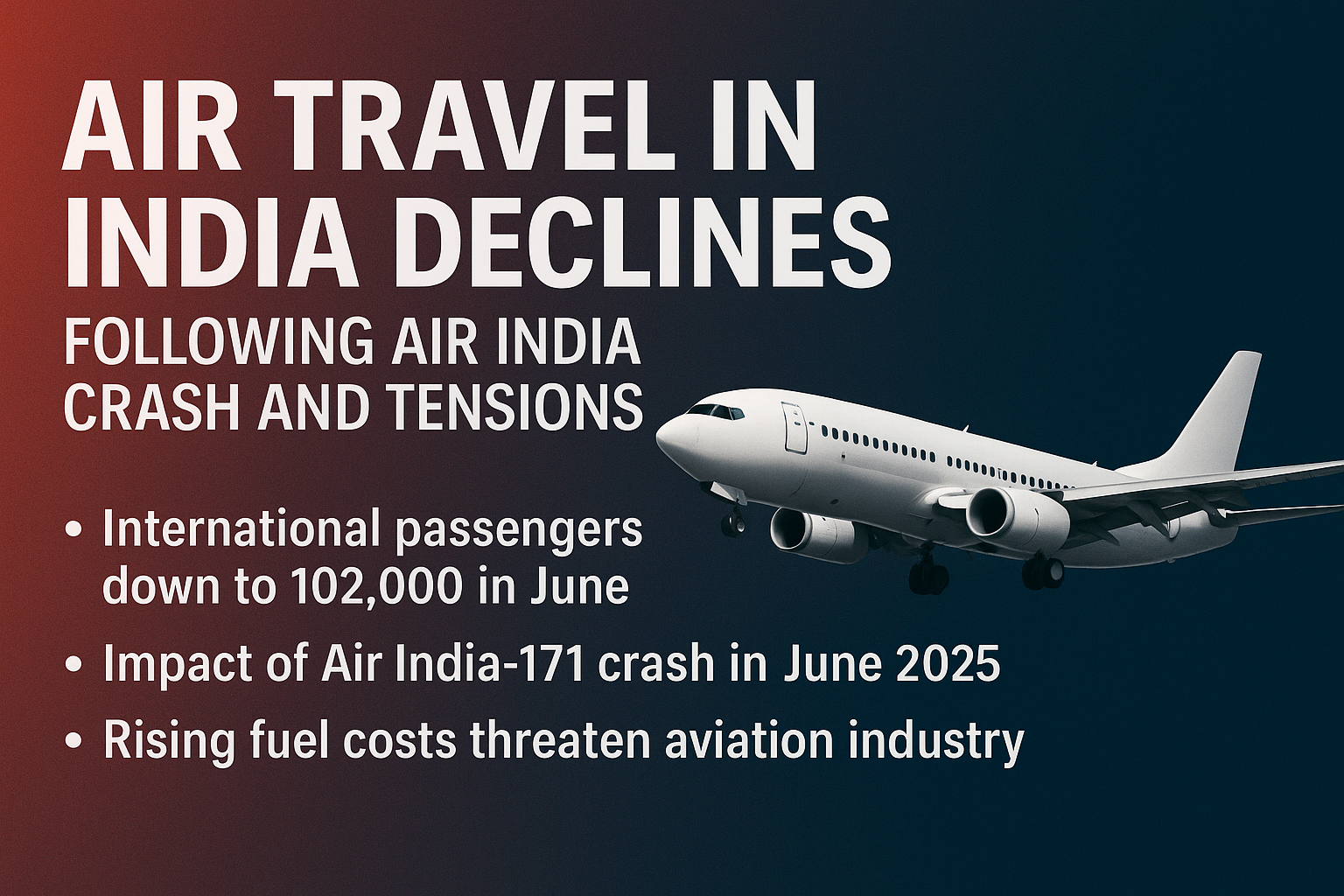ndia’s aviation industry, which had been steadily recovering from pandemic-era lows, is once again facing severe headwinds. A combination of geopolitical instability and the tragic crash of Air India Flight 171 has led to a significant decline in both domestic and international air passenger numbers. According to a new analysis by ICICI Securities and official data from India’s Ministry of Civil Aviation (MoCA), the national air travel landscape is experiencing a notable slump, posing renewed challenges for the sector.
Passenger Numbers Plummet Following Crisis Events
As per the latest MoCA figures, average daily international air passengers have dropped from 118,000 in April 2025 to just 102,000 in June 2025—a nearly 14% decrease over two months. The downturn in international travel began with escalated tensions between India and Pakistan earlier in the year, but the situation worsened dramatically following the crash of Air India-171 on June 12, 2025. This fatal incident claimed 241 lives and prompted immediate safety reviews, flight cancellations, and widespread public concern.
Domestically, average daily passenger numbers have also slipped from 490,000 to around 460,000 as of mid-June, suggesting that the aftershock of the tragedy has affected even short-haul travel demand. Experts say that growing caution among travelers and reduced operational capacity are at the root of this downturn.
Air India Flight 171: A Catalyst for Crisis
The crash of Air India Flight 171, a wide-body aircraft en route to London from Mumbai, has proven to be a defining moment in India’s aviation calendar. Occurring during a peak travel season, the crash led to the immediate grounding of several wide-body aircraft within Air India’s fleet. Between June 12 and June 17 alone, 83 long-haul flights were canceled.
In addition to the direct impact on passenger confidence, Air India has scaled back its international operations by 15%, affecting routes to Europe, the Middle East, and North America. The airline, which is in the midst of a transformation under the Tata Group, now faces the challenge of regaining trust while dealing with reduced load factors and potential regulatory scrutiny.
India-Pakistan Conflict Further Dampens Demand
Prior to the Air India crash, the aviation sector was already grappling with disruptions caused by geopolitical tensions between India and Pakistan. A brief but intense escalation of military activities in early 2025 led to airspace rerouting, temporary flight suspensions, and higher insurance premiums on international routes.
The Indian Directorate General of Civil Aviation (DGCA) had urged airlines to implement contingency plans, many of which included rerouting through longer corridors—raising operational costs and extending travel times. These issues have not only reduced airline profitability but also contributed to a visible dip in bookings across certain international segments, particularly in South Asia and the Middle East.
A Temporary Boost: Declining ATF Prices in Q1FY26
Despite the dual crisis of safety concerns and regional conflict, there is one silver lining for the Indian airline industry. Aviation Turbine Fuel (ATF) prices dropped by 8.2% in Q1FY26 compared to the previous quarter, according to ICICI Securities. This decline has provided a short-term cushion for airlines, particularly those operating in low-cost segments.
However, the relief may be fleeting. As of mid-June, global crude oil prices have surged by nearly 20%, reaching USD 77 per barrel. This spike threatens to reverse gains in Q2 FY26, a traditionally slower travel period for India’s aviation market. Rising fuel costs could further strain airline margins, especially for carriers with limited hedging strategies.
Passenger Sentiment and the Road to Recovery
The recent decline in air travel underscores the aviation industry’s deep vulnerability to external shocks. From geopolitical uncertainty to catastrophic accidents, the Indian aviation sector is at a pivotal juncture. Passenger sentiment, which had begun to rebound in early 2025, is now showing signs of fragility.
Restoring consumer trust will require a multipronged strategy from airlines and regulators alike. Transparent communication, enhanced safety protocols, compensation policies, and robust crisis management frameworks are expected to become central themes over the coming months.
Air India, in particular, faces the dual burden of restoring its reputation while managing operational restructuring and fleet modernization. The carrier had previously announced plans for fleet expansion and enhanced international connectivity, but these ambitions may now face delays due to the current crisis.
What Lies Ahead for Indian Aviation?
Industry analysts predict that the rest of FY26 will be challenging for Indian carriers, with recovery largely dependent on three factors:
- Stabilization of geopolitical tensions with neighboring countries.
- Swift and transparent response to the Air India crash, including safety audits and compensation.
- Management of fuel cost volatility, which directly affects ticket pricing and profitability.
According to CAPA India, a leading aviation consultancy, India’s total passenger traffic for FY26 may fall short of earlier projections by 5-7%, unless quick corrective actions are taken.
Conclusion: A Test of Resilience for Indian Airlines
The unfolding situation in India’s aviation sector is a stark reminder of the industry’s susceptibility to global events. The combined impact of the Air India-171 crash and geopolitical instability has sent shockwaves through the sector, affecting both travel demand and operational dynamics.
While a drop in ATF prices has offered momentary relief, looming crude oil hikes and waning consumer sentiment suggest that India’s airline industry has a long road to recovery. For now, airlines must focus on strengthening safety standards, improving crisis communication, and offering transparent support to passengers to navigate through this turbulent phase.
For more travel news like this, keep reading Global Travel Wire



















